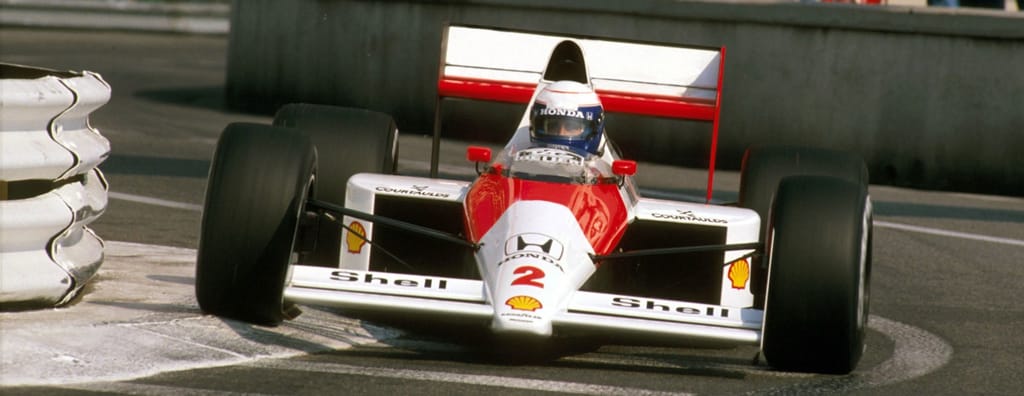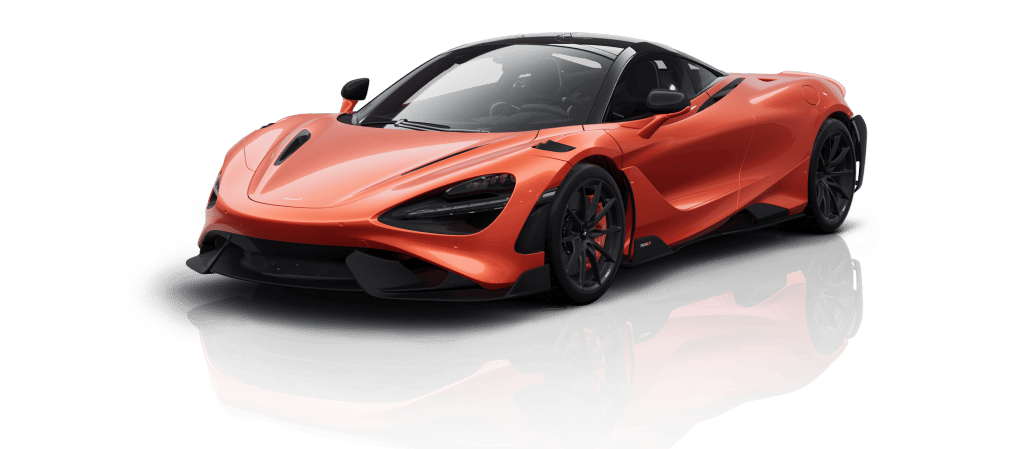
MP4/5
- Year 1989
- Race wins 10
- Series Formula 1
1989 meant all change for McLaren as the 3.5-litre normally aspirated Formula 1 came into force. The change had been flagged clearly many months in advance, and McLaren and Honda had been working on a car and engine package even as the MP4/4 was dominating the 1988 season. Even at Woking, however, few would have predicted that the first season of the non-turbo era would match the incredible results of the previous year with McLaren walking away with further Drivers' and Constructors’ World Championships.
Under Neil Oatley’s guidance, the design team had created an all-new monocoque, new double wishbone suspension with pullrods up front and pushrods at the rear, and expected almost 700bhp from the 72 degree Honda RA109E V10. This drove through a longitudinal version of the David North/Pete Weismann three-shaft, six-speed gearbox, with a transverse unit arriving in mid-season. Honda’s Osamu Goto made available eight new engines for the start of the year, though there was a slight delay to allow for a switch from belt- to gear-drive for the camshaft operation.
In the interests of aerodynamic flexibility Oatley’s team stuck with the established practice of having a separate upper body, and though the monocoque looked similar to its forebears it incorporated a number of modifications as a result of a comprehensive review of the car’s aerodynamic performance.
McLaren soon began to dominate the season, albeit not quite to the degree it had the previous year as the MP4/5 was not devoid of problems. There were some lubrication issues, which had reared their head during testing, and also some questions over the balance of the handling once Oatley’s team had shaved off even more weight to meet the 505kg limit.
Even as the storm clouds were gathering over the relationship between Alain Prost and Ayrton Senna, it was clear that McLaren was once again the team to beat. Senna’s collision in the first corner at Rio didn't alter the fact; neither did the clutch trouble which prevented Prost making an important pit stop, nor indeed complaints from both drivers about their respective throttle responses.
Much of this was resolved during some frenetic testing and development on the run-up to the San Marino GP. Upon arrival at Imola Prost promptly broke Nelson Piquet’s three-year old lap record, while Senna won the race at an average speed of 125.479mph, making him more than three per cent faster than the previous year.
So far, so good - at least until Monaco where Prost publicly denounced Senna as a “Man of no honour”. At Imola, he alleged, the latter had breached a no-passing agreement for which he, Senna, had apologised only belatedly and somewhat reluctantly. Thereafter the two spoke to each other only rarely, preferring to communicate with the other via Oatley, Steve Nichols or Jo Ramirez. The fact that they still won 10 races between them, enabling McLaren again to clinch the World Championship, speaks volumes for both the fundamental structure of the Honda-McLaren team and the quality of the MP4/5.
The new gearbox was still not ready for Monaco but new Brembo brakes were and these helped remove some weight from the car. Once again Senna won, despite losing second gear, before more trouble flared up in Mexico where apparent disparities in the amount of fuel consumed by the two cars led Prost to question how fairly the team was dealing with the two drivers. It is more likely Senna simply drove further at high revs and that Prost’s relatively lighter right foot (which had been such a benefit during the turbo era) worked slightly against him.
When the new transverse gearbox finally had its debut at Silverstone, a series of misfires and engine and gearbox failures followed. None of this prevented McLaren qualifying first and second, but in the race itself Senna ended up in a gravel trap. Indeed, despite all his complaints, it was to be Prost’s season.


